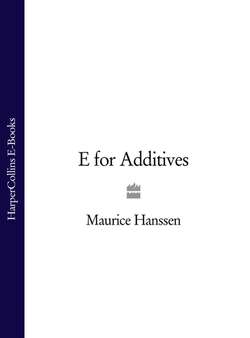Читать книгу E for Additives - Maurice Hanssen - Страница 32
11. The Natural Opportunity for Profit
ОглавлениеThe food revolution following the publication of E for Additives produced two conflicting results. The first was a whole lot of foods that were nutritionally better as well as being free from unnecessary and possibly harmful additives. The second was the use of such statements as ‘free from artificial colours’ and others, including the frequent use of the word ‘natural’ to give the impression that the food was just as if it had been taken from an old world farm and prepared specially for you with the care and consideration of a good home cook. These foods are taking a step along the right road but you have to be very discriminating indeed.
If a product says ‘no artificial colourings’, then that is all very well but what are the other ingredients? The overall concept of a healthy and balanced diet is far more important than any concern you may have for the odd E-additive unless you have a special sensitivity. It is the food we eat that makes us fit and healthy and the trick is to avoid being misled by advertising and pack presentation which makes you think that the absence of certain ingredients means that by default other good nutritional substances must be there. They may, but there again they may not.
The E-code has given us the freedom to make informed decisions about some of the foods we eat, but those decisions should not just be based on the additives but upon the whole nutritional concept of the food. On the other hand, food is also fun, and if you like to enjoy a few potato crisps, that is just fine. It is truly an advantage that you can now obtain them without BHA and BHT (E320 and E321), with natural flavours, and cooked in vegetable oil.
E does not stand for EVIL, but rather for EXPLANATION. Regrettably many consumers reject all foods with an E number whereas no-one need be concerned by four out of five of the Es.
This is causing yet another hype with manufacturers taking the legal option of spelling out the name of the additive in full instead of using the E number. They claim that this is because the consumer now understands additives better. The truth is that confusion has been created, the dreaded E symbol is absent. No E number equals OK to eat so a person who has become used to avoiding E102 because of an allergy problem now has to be aware that this additive is tartrazine. An asthmatic avoiding sulphates, E220–E227, has to learn eight different chemical names in addition to their numbers.
The law needs to be changed so that E numbers have to be listed as well as the optional chemical names or people will suffer.
The food industry has to make a profit in order to survive and to have the money available to develop new and interesting foods. It is our job to make sure that the promises on the packet are supported by the composition of the product; for by selecting for our personal use those products which are truly honest and nutritionally sensible and, not to be forgotten, taste good, we shall be supporting those manufacturers, and there are many of them, who truly understand the difference between nutritional hype and nutritional help.
